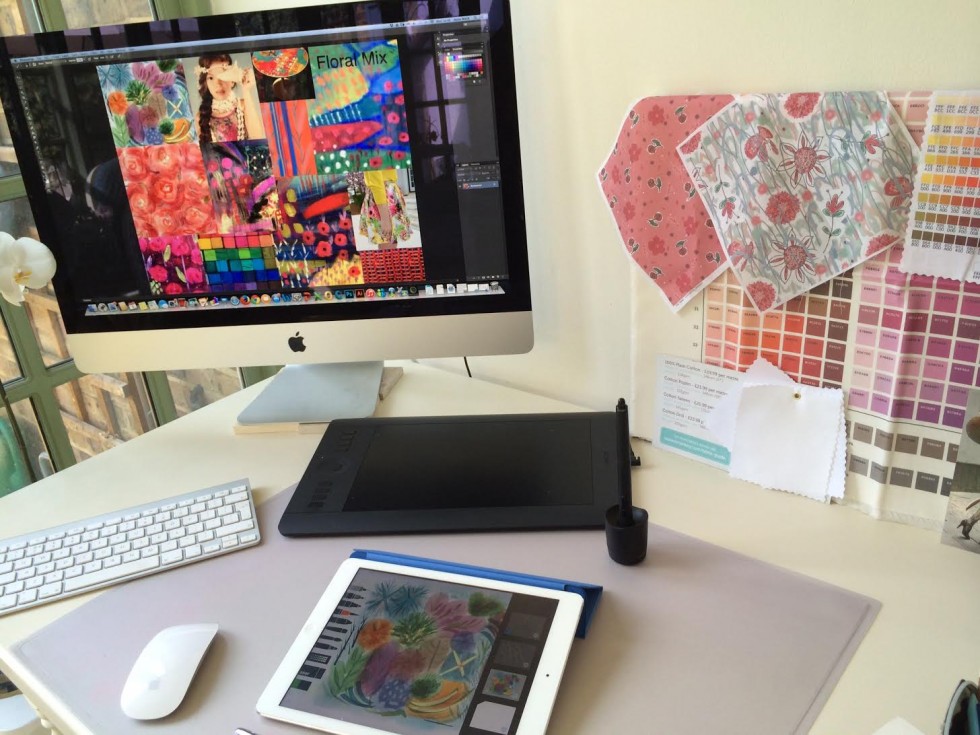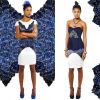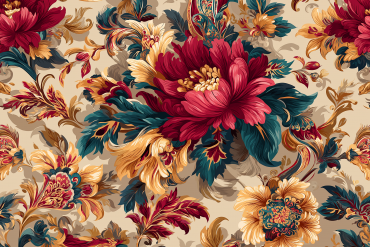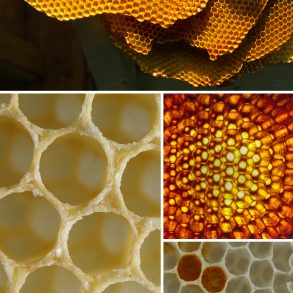
Naila studied at Winchester School of Art and has worked in the fashion industry for several years designing for the high street, creating hand painted and CAD textile collections. She has also worked as a freelance designer for several London design studios including Palm Studios and Whiston and Wright, as well as working as a textile lecturer. You can read more about her in this interview from the archives.
Keep an eye out for an excerpt from Naila’s TDL training on designing on the iPad, coming up later this month. For now please enjoy this interview in which Naila talks a bit about the importance of sketching and mood boards in her textile design work.
Could you tell us a bit about your sketching habits? How often do you sketch and what subject matter do you focus on?
Sketching is a very important part of the design process for me, often I sketch flowers from my garden room which houses a huge array of different coloured orchids and many other flowering plants. The drawings are often the starting point of my design work, I either tend to use it as reference for a painted design or transfer the drawing on to my iPad or iMac and start developing ideas from it. I’m constantly sketching.
Do you draw from real-life observation or from your imagination or both? Which method do you feel produces the best material for your pattern designs?
I always try and draw from real-life and often set up mini still life’s with flowers, shells and interesting things around the house that I have collected. I just feel more comfortable drawing from real-life rather than photos.
Do you have any recommendations as far as tools/materials for keeping a sketchbook and creating mood boards?
When creating mood boards it always helps to be inspired by new visual material. I gather my inspiration from a huge variety of materials–it can be anything from a painting or a postcard as a starting point, then I work around that idea collecting other visual sources that may sit well with it and then start developing a theme for mood board/sketch book and then it expands into a textile collection.
My favourite mood board app is the M board App. For drawing, the Sketches App and Brushes App are two of my favourite and the iPad brush I use is the Sensu IPad pen. I like the feel of it, it’s very comfortable.
What do you feel is the importance of mood boards in your design process?
I am an ideas person, it helps me put my ideas down quickly in groups. I’m often working on several clients’ work at a time, and I find it a great way of focusing on a theme and as a visual reference point for a collection or textile project.

I love many of the iPad apps and one of my favourites is Sketches. It allows me to draw with my brush, create layers, enter RGB values, rotate, flip, scale up or down motifs quickly when away from my iMac. Later I am able to send my iPad design/idea onto my iMac and put into a desired repeat or any finishing touches, the iPad just gives me so much freedom and is just another extremely useful tool for designers.
Do you have any advice for designers who feel less tech-savvy or hesitant to try new technologies like the iPad for their design work?
The iPad is so designer friendly and the apps are very easy to use, you just need to load a few different Apps on and see which ones you feel comfortable using. Just try drawing first and playing around with different brushes and colours.
Anything else you’d like to share with our readers on the topics of sketching and mood boards?
Recently I worked on a contract where I created over 180 designs in 3 weeks, I drew my designs out quickly and then samples of products were created from just the hand drawn sketches. Being a freelance designer you just have to be flexible, you never know what your next project may involve and being able to hand draw, use a pressure sensitive Wacom drawing pen, iPad apps, stylus pens, CAD or a paint brush just widens the type of freelance work one can take on which makes my job more interesting.
Become a Textile Design Lab member to gain access to Naila’s full tutorial on designing on the iPad when it becomes available later this month, in addition to all of our past guest expert tutorials and the other wonderful e-courses and features of the Lab. Read more about what’s included in our curriculum guide.













